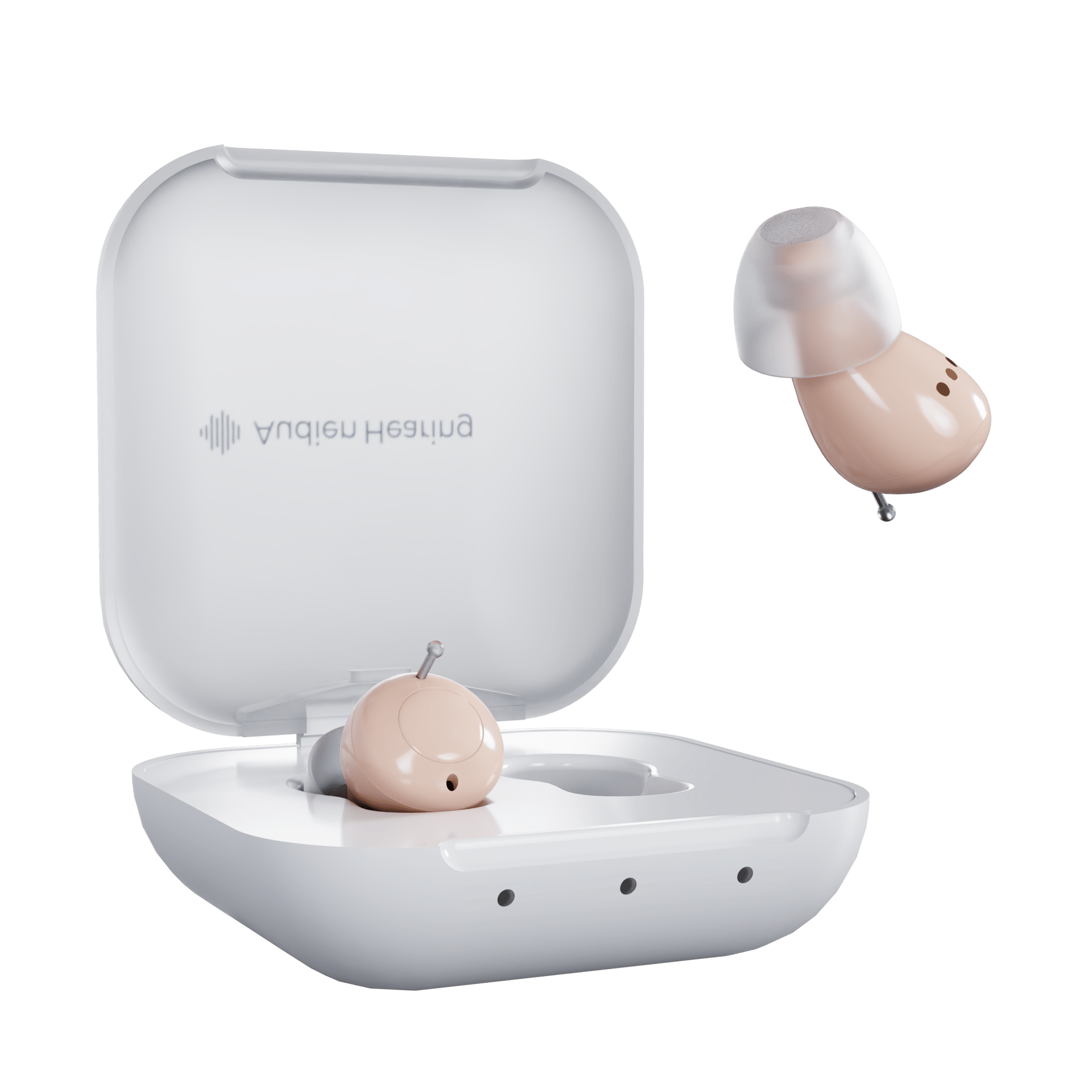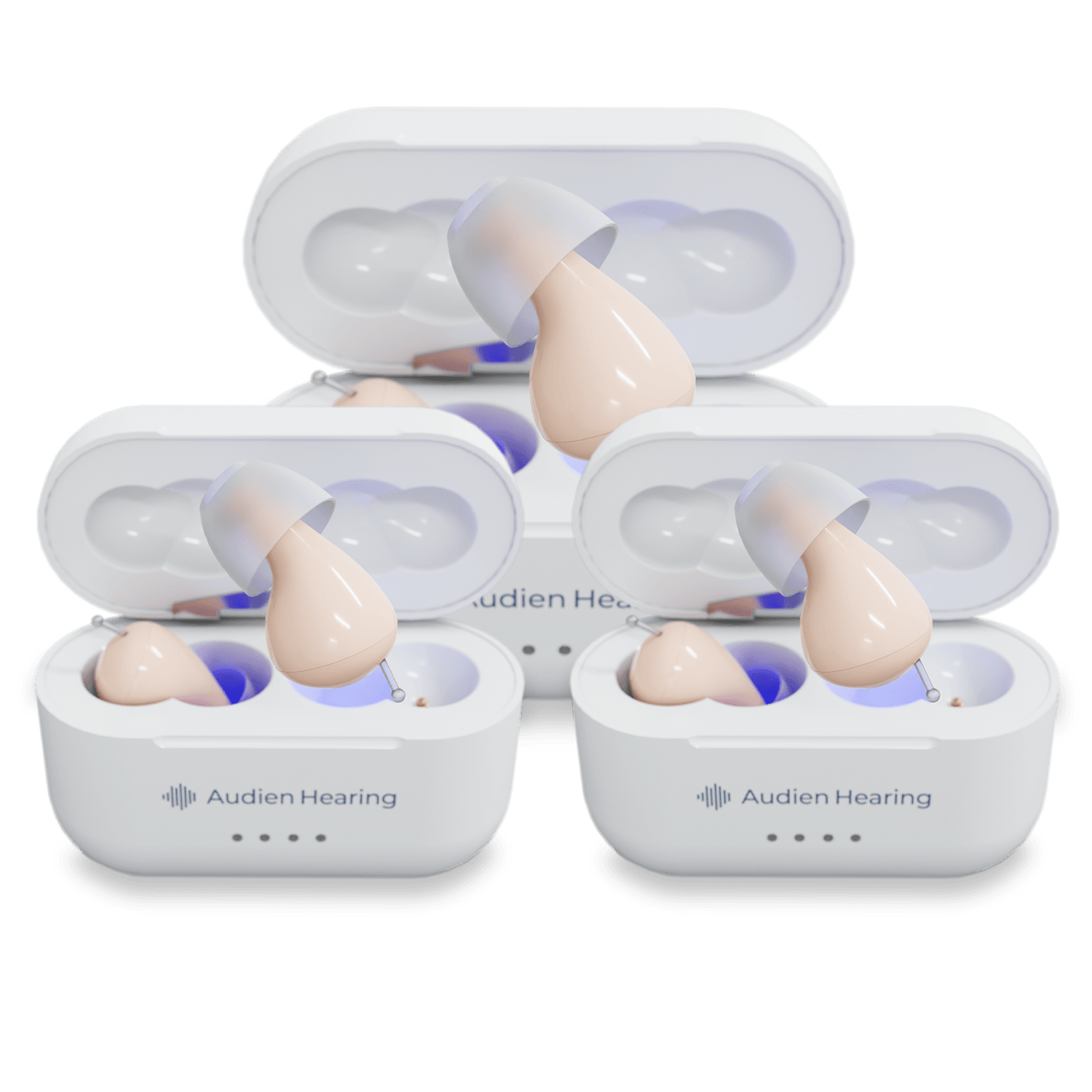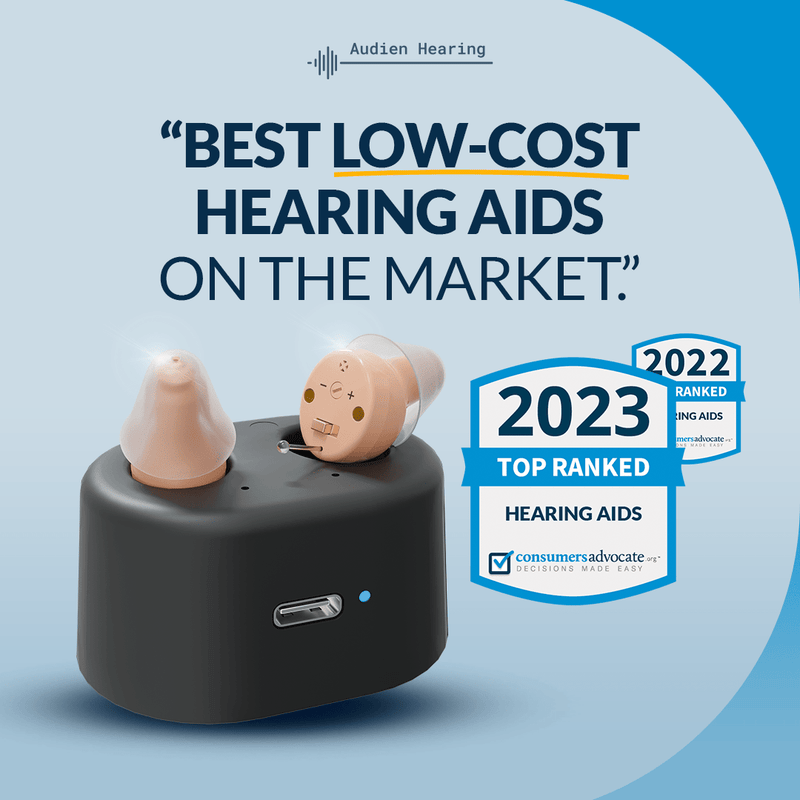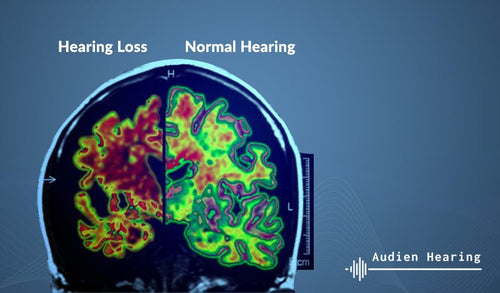However, these devices are expensive, and not everyone can afford them.
Fortunately, technological advancements in audiology have made it easier and more affordable for people with mild to moderate hearing loss to benefit from hearing aids.
In part due to the Affordable Care Act (ACA) and Americans with Disabilities Act (ADA), hearing aids can be partially covered under some insurance which has created an abundance of options available on the market when it comes to cheap hearing aids.
But when insurance doesn’t cover enough, or you need to have alternatives available, finding the best cheap hearing aid can save you money and raise your quality of life.
This article will discuss what types of options for inexpensive hearing aids exist and how they work. It will also advise choosing the best hearing aid to suit your needs and budget.

Benefits of Cheap Hearing Aids
Cheap hearing aids are becoming increasingly popular among those with hearing loss who want to improve their quality of life without busting their budget.
While there is no one-size-fits-all approach to finding the best cheap hearing aid, there are several benefits to choosing a low cost option.
- Improved hearing and comfort– For starters, cheap hearing aids can provide access to a level of sound quality and comfort that expensive devices do not.
Affordable models may not have all the bells and whistles of more expensive options, but they offer greater clarity and better audio performance than more costly alternatives. -
Built-in features–Many good cheap hearing aids come with built-in features such as noise reduction, feedback cancellation, and directional microphones that help reduce background noise while still allowing you to hear voices.
-
Battery life–Another benefit of choosing a low cost hearing aid is that it can be used for more extended periods of time without needing to replace it as often due to wear and tear. This can save money in the long run.
- Easy to maintain–Finally, if you’re looking for an entry-level device that doesn't require much maintenance or expertise to use, then a cheap hearing aid may be just what you need.
Another factor is that there are differences between prescription hearing aids and OTC hearing aids. These differences range from cost to requiring a doctor's evaluation and fitting.
All in all, there are many advantages to buying a budget-friendly hearing aid that should be noticed when making your decision.
Whether you choose an inexpensive or prescription model, the key is to remember that the best hearing aids are the ones you’ll wear. Also, ensure it fits your needs and budget to enjoy improved sound quality without spending too much money.
Types of Cheap Hearing Aids
There are many types of cheap hearing aids available to those with hearing loss. Basic models offer essential sound quality, while more advanced options include features such as noise reduction, feedback cancellation, and directional microphones.
Depending on your needs, budget, and lifestyle, there is likely to be a low cost hearing aid that fits all of your criteria.
Behind-the-ear (BTE): Cheap behind-the-ear (BTE) devices are among the most popular choices for those with mild to moderate hearing loss.
These devices are lightweight and discreet, making them comfortable to wear for long periods of time. Additionally, they come with adjustable volume control and directional microphones for improved sound quality in noisy environments.
In-the-ear (ITE): In-the-ear (ITE) models are also becoming increasingly popular amongst those looking for an affordable option that won’t break the bank.
They are custom-molded to fit your ear canal perfectly and provide superior audio performance without being bulky or intrusive.
Receiver-in-canal (RIC): Finally, receiver-in-canal (RIC) hearing aids provide excellent sound quality at a fraction of the cost of more expensive models.
They feature slim receivers that fit comfortably inside your ear canal while still providing crisp audio performance in any environment.
No matter which type of cheap hearing aid you choose, it’s crucial to ensure it meets your needs and budget so you can enjoy improved sound quality without spending too much money.
Top Features Of Low Cost Hearing Aids
Low cost hearing aids are a great way to improve your hearing at an affordable price. They offer noise reduction technology, directional microphones for better sound localization, and adjustable Volume Control for added comfort.
Additionally, these devices have built-in advanced digital low-frequency sounds that focus on speech frequencies, which help make it easier for those with hearing difficulties to pick up on conversations.
Lastly, low cost hearing aids often have long battery life and are waterproof, making them perfect for outdoor activities like swimming or other water sports.
Some of the top features of low cost hearing aids include integration with your smartphone through a smartphone app and directional microphones.

Smartphone App
Smartphone apps have revolutionized the way we interact with our hearing aids. With the help of a smartphone, you can adjust your hearing aid settings from the comfort of your home and even access real-time feedback on how well you are hearing.
Some manufacturers now offer apps that allow users to customize their hearing aid settings, track their progress over time, and even connect with friends and family members who also wear hearing aids.
Best of all, these apps are usually free or low cost, making them an affordable solution for those looking for a more convenient way to manage their hearing aids.
In addition, smartphone apps provide an easy and effective way to monitor and improve your hearing health without breaking the bank.
Directional Microphones
Directional microphones are an excellent solution for those looking to improve their hearing by focusing on sound from a specific direction, allowing you to hone in on conversations and other sounds even in noisy environments.
Directional microphones may be integrated into your hearing aid, or they can come as an additional add-on for more flexibility.
With directional microphones, you can better understand conversations in noisy environments and enjoy improved hearing quality at a fraction of the cost of more expensive models.
Personal Sound Amplification Products (PSAP)
Personal Sound Amplification Products (PSAPs) are devices that amplify sound, making conversations easier to understand and other sounds more audible in noisy environments.
PSAPs come in various sizes and designs, with some featuring directional microphones which allow users to focus on specific sounds or conversations in noisy environments.
PSAPs are usually low-cost and feature user-friendly controls, allowing users to customize their settings and get the most out of their devices.
For those looking for an affordable solution that still provides improved sound quality, PSAPs are worth considering.
Finding the Right Fit for You
In addition to selecting the correct type of hearing aid for your lifestyle, it’s also essential to ensure that it fits correctly.
Many hearing aids are designed for both ears and come with interchangeable ear tips that allow you to find the most comfortable fit.
When trying on a hearing aid, it’s essential to check that the earpieces fit snugly without being too tight or loose.
It’s also important to ensure the hearing aid isn't overly intrusive and doesn’t block your ear canal.
Finding the right fit is essential for getting the most out of your hearing aid.
- Talk to your doctor or an audiologist about the right hearing aid.
- Research different types of hearing aids and consider what features work best for your lifestyle.
- Try out earplugs in each ear to test the fit before buying a hearing aid.
- Test your hearing aid in different environments, like in a noisy restaurant or outside, to determine if it works correctly.
Finding a good, low cost hearing aid doesn't have to be complicated.
With the help of smartphone apps, directional microphones, and personal sound amplification products, you can find an affordable hearing solution that works for your lifestyle and budget.
Remember to talk to your doctor or an audiologist for the best advice on finding the right fit for your hearing aid.
Then, with some research and a bit of patience, you'll be able to find the perfect low cost hearing aid for you.














